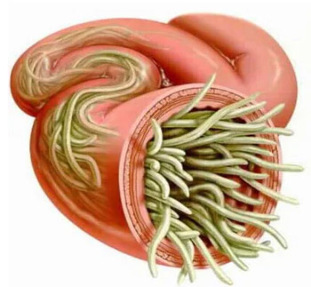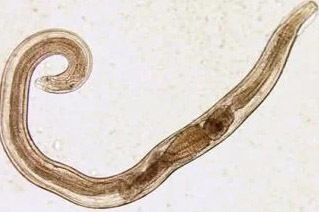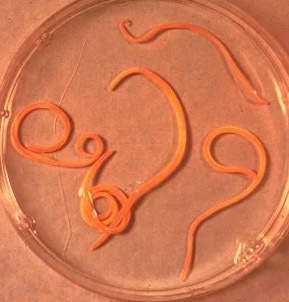Today, science has known of the order of 280 types of non-commercial, is able to grow and develop, and to live in a human body, the disease in the different organs and tissues. The frequency of infection by a worm of a person, it depends on the climate and socio-economic conditions of specific areas (in less developed countries, especially those that are located in a setting of tropical and sub-tropical zone, and the level of incidence of poverty is significantly greater than that in the states that are more economically developed.
The methods of infection of a person, the worms:
- Bioelements (poison of animal origin).
- Diseases helminthiasis (passed on from one person to another).
- Geohelmintíase (a disease caused by parasites, and to carry out one of the stages in the life cycle on earth).

The factors that influence the manifestation of helminths
In a way, the penetration of the parasite into the body:
- The degree of adaptation of helminths in the human body;
- The density of the population (the number of) the plague individuals.
- Habitat of the worm (the fabric of the parasites that are living in the soft tissue, and while they live in the gaps of the hollow organs). Some of the helminths at different stages are, and a foundation of reinforced concrete, and the fabric on the form. Planctônica, and the development of a training-of-worms that usually cause the most pronounced as pathological changes.
In the absence of re-infection, the number of adult parasites in the human body, and does not increase. This is the one that mainly characterizes the infection of the diseases are caused by bacteria, viruses, fungi and protozoan organisms.
Worms in humans symptoms
Helminthiasis is a disease that is characteristic of the 2-stage in the current self from two weeks to two months), and chronic (several months to a few years ago).
The symptoms of acute helminthiasis
The first signs of the disease may manifest itself at different periods of time (typically 2 to 3 weeks, as the ascaris, after 2-3 days, and then, when the filariasis, the incubation period can last from 6 to 18 months).
In the acute stage of a parasitic infestation symptom of a more important reaction in the event of an allergic reaction (the production of antibodies to the antigen on the migration of the larvae of the parasite). Many times, the infected with the worms people itching on the skin that appear skin rash, itching, opposed to the retidiviruuschem downstream, thus increasing the lymph nodes are regional, you may experience generalized or local edema, muscle and joint pain. Also, the migration of the larvae of the parasite, all can cause pains in the chest, coughing, attacks of shortness of breath, disorders of the chair, such as nausea and vomiting.
At the same time, the acute helminthiasis may also be accompanied by more severe violations (one serious form of pneumonia, and hepatitis, in case of an allergic myocarditis, hepatosplenomegaly (enlarged liver and spleen).
In the blood, it increases the number of eosinophils (eosinophilia), and disrupted the normal quantitative relationship between protein in the sides (dysproteinemia).

Signs of chronic helminthiasis
In the chronic stage, the symptoms depend on what is in the body "inhabited" by the parasites, as well as the important role played by the size and the quantity.
Thus, when the parasites in the intestine are isolated from the species, the disease may be asymptomatic (with the exception of the cases of infection, very large eddy). The characteristic signs in the chronic phase of the intestinal helminths that are patients of the disorder. In children, the most expressed asthenoneurotic, and the pain that is caused. When a massive invasion Ascaris may develop intestinal obstruction, mechanical jaundice, and pancreatitis.
Consuming all that you need for your life, a substance of the organism, the host, helminths are the cause of the digestive disorders, disorders of the extraction of vitamins, minerals, carbohydrates, proteins, and fats. At the same time, the waste of products, without the need for, and burden of the microbiota in normal gut and reduces the immune resistance of the organism.
People who are suffering from helmintíasemi, due to a weakened immune system, and enhanced the process of cell division (permanent effect, for the recovery of the parasites from the tissue, greatly increases the risk of the occurrence of the reported malignant tumors.
The types of worms that infest the human body
Pathogens, helminthes, and human are 2 different types of worms that are round (ancilostomídeos), and flat (for a tape, and the internet.
Roundworms
The worm
The parasites that are the cause of enterobiasis is a small (to 10 mm) of the thickness of abdominal worms, with grayish-white in color. So it is with the food (from the mouth). The reason for this is the your hands dirty. The eggs of the parasite can be on the earth, and the wool of infected animals, and impure vegetables, and fruit, and PR. however, when enterobiasis case samsarajade (especially in children) resulting from the scratching of itchy areas, and the subsequent ingestion of the eggs. A larva (plural larvae) pinworms if you develop over the course of two weeks, in the digestive tract. Becoming an adult is a person, the worm at the bottom of the departments of the fine, and superior to, the departments of the colon.

Ascaris
Ascaris is a parasite of spindle-shaped form, with red, yellow, by getting into an adult, capable of about 40 cm (female) and 15-25 cm (males). Not having suction cups or other attached devices, ascaris, is able to move around at the gathering of the food for the masses. The egg pendants, the female parasite, stand out, together with all the bowel movements.
With the infection, ascariasis happens in the event of ingestion of a mature egg along with the water, or unwashed fruits and vegetables, which hold the particles of the soil. After the penetration of the eggs in the intestine of them are going to fall due to the larvae. Then, you creep up to the wall of the intestine, they reach the the circulation of blood to the heart, and from there into the lungs. Through the lung alveoli are similar to dolls through the respiratory pathways re-enters the oral cavity. After you have re-ingestion of the parasite reaches the small intestine, where they develop to adult in an individual. The worm can live for up to 12 months, and over the bird dies, and the note, together with all the bowel movements. In the gut of a host, they can live with one or more of hundreds of people.
The genus meloidogyne
In the genus meloidogyne, the causative agent of the in whipworm infections, the worms are white, piggybacking onto the in the home department of the large intestine, and extends to all the sizes from 4 cm to 5 cm. the parasite Feeds on the blood and the tissues of the mucosa and the rectal.
Eggs of whipworm, drop of water on the walls of the small intestine, to go out along with the fecal matter for the masses. Their development takes place in the environment, (ideally on the ground). The eggs of the Mature of them to the larvae of the parasite enter the body in food, by means of, through the hands of the dirty water, unclean vegetables and fruits.

Trichinella
Exciter trichinosis is a small, round-worms, which ranges from 2 to 5 mm. in length. The infection occurs when the use of it is a bad PRohrannogo of meat (beef, pork, bear meat, wild boar, or). Penetrating in the intestine, the larva of the parasite in 3-4 days and Grows to a Mature individual. The life expectancy of the worm is up to 40 days, after which time the parasite to the bird's death. Prosurvival wall of the bowel, the larva will penetrate into the current of the blood, and then sent to all of the organs in the human body, you are laying on the body. In this case, they are often amazed at the breath and of the muscles of the face, as well as of the muscles-flexors of the members.
In the early days of the infection, the patient complained of pain in his stomach. Then, about 2 weeks, the body temperature rises to 39-40 With the itching on the skin that appear skin rash, if you develop muscle pain, it swells the face. In a certain period of time, in the case of a major infection, there is a significant risk of the occurrence of the reported deaths. For about a month now, it comes to a cure. The parasite is encapsulated in the form of a spiral, and then within a couple of years ago, the bird will die.
Ancylostoma and necator
These two parasites are similar to each other, by biological releases, as well as of the diseases of the human body. With respect to the decision to group under a common name, ancilostomídeos). Worms, reaching a length of 10 mm to 15 mm, and poverty 12-p. well. It should be noted that this is one of the most common, but at the same time it's quite rare for new pests. The larvae of the worm enter the human body through the skin of the curtains into contact with the contaminated soil. Further, by entering into the current of the blood, as well as the dolls, they migrate to the lungs, then through the bronchial tubes, in conjunction with the otharkivajushche mucus to the intestinal tract. Hookworm infects the intestine, parrozplyayas the wall of the bowel. The parasites, feeding exclusively on blood, precusive by penetrating the lining of blood vessels, which is injected there, pprotivosvertavatmi component. For the life of a person-adult, on the average, it can absorb up to 0.05-0.35 ml of blood. Therefore, the symptom that is most characteristic of this helminthiasis is a deficiency of iron anemia, as well as the change in the ratio of protein to that of the factions (dispRnoaquelesenãomiEu).
They are scumbags
In a large, cosmopolitan
This is one of the major helminths, reaching a length of 10 to 20 meters. The disease, which is caused by a deal with the parasite, called the difillobotrioz. The life cycle of a worm starts with a fresh-water fish, or shellfish. In the human body, which is at the end of a master of a wide têniae, the larva drops off, along with the facility, or contaminated steak to fish. By reaching out to the small intestine, the parasite attaches to the wall and about 20-25 days to grow to ppolovozreloj of an individual.
The Liver Fluke
No one had called nopeStnoRxnoz – is a flat worm that reaches a length of 7-20 mm in diameter. It should be noted that more than 50% of the cases of infection by the rechentechnik, The Flukenom (it's still called a cat, flounder), which represents the residents of the Russian federation. The larva of the parasite begins to grow in after being hit by the egg in the fresh water of the pRnoGLnoteVSHex your ground). Then, they penetrate into the body of a fish (carp, carp, bream, roaches). Human infection occurs by ingestion of contaminated food, of fish, of flesh, of the past, just enough to heat. A Larva (plural larvae)-the liver is The Flukee of the small intestine into the bile duct and into the gallbladder, with the clamp there, with two cups.
Beef, pork, TSEpnível
Of these, almost identical in its structure to the parasites reach a length of 5 to 6 feet. The infection from beef tapeworm infection and teniasis is caused by the consumption of meat from cattle or swine's flesh, and the infected population, one of the intermediate forms helminthiasis). Feasible, for the population presented in the form of off-white bubbles, and they come in sizes from inch (0.5 cm), attached to the wall of the small intestine of man and in the 3 months becomes an adult individual. Tape is a parasite, comprised of over 2000 segments, continues to grow. In this case, the end segments, which contain eggs, there are self-moving in the colon) to the anal opening, and then crawl out of the anus, or stand on the outside along with the stool (feces). Most of the symptoms characteristic of helminthiasis is the poor functioning of the digestive system.
Echinococcus
For this parasite, man is the master. The worm is in the human body, such as the finns. The master's final Echinococcus – a wolf, a dog or a cat. The infection that occurs in food as soon as possible with all the animals and all the objects in the environment, the propagation of eggs of Echinococcus. Once you get into the bowels of them, if you are developing oncospheres (shestigrannye the larvae). From the gut, they enter the stream of the blood and released throughout the entire body.
Sheets
This is a parasite that is considered to be a variant of the Echinococcus, it is because of one of the most dangerous helminthes of (alveococcosis), which, according to the severity of the occurrence, stories like cirrhosis and liver cancer. The infection occurs in the penetration of oncospheres (eggs in the Mature larvae and in the gut. It was there that the embryo leaves the egg, and, penetrating into the intestinal walls, enters the current of the blood. Forth, with a flow of blood for the parasite that spreads through all the tissues and organs of the body (it is usually located in the liver. It is here that the larvae that starts in the development stage, formed multicam bubble, labrocyte). Each chamber contains a delivery head of the parasite, pRnodnoLVeusegno to develop gradually. Eurocity is a very aggressive form increased due to the rising of the air bubbles, and it also has the ability to grow in the liver, such as cancer metastasis.
Diagnosis of helminths
Diagnosis of worm intrusions, and includes the following activities:
- collection of a complete case history, helps you to understand some of the possible causes of the infection;
- laboratory testing of stool, blood, content, 12p bowel, rectal, and perineal programme of the mucus on the tissue, the muscles, the sale of the mucus, bile. To carry out the analysis, can be identified in eggs, segments or fragments of the parasites. However, the increase in the level of eosinophils in the blood is a sign of the availability of helminthiasis.
- when the diagnosis of a disease caused by the larval stages, or fabric management, is carried out serologic studies (ELISA's CAR, the response from the indirect to the core, emmUniversidadenoa gripenoRUETSEntnsth, analyze, and pR.).
- in order to detect the worms, and its effect on the tissue of the liver, and it is assigned to the ultrasonic scan, computed tomography scan, and endoscopic research.
Worms in humans treatment
In the acute phase of the infection, the patient is given drug treatment and desensitization therapy. A serious illness, and the trematode liver, trichinosis) in the form as summarized in the health readings, that are used for glucocorticoid.
As a drug therapy is specific to the nature of the pathogen is attributed to the special pRnotenonogelmintnsе chemotherapeutic agents.
In parallel, to a person who is sick, it is recommended that the reception of anti-histamines, and enterosorbents. In the final phase of treatment involves the use of probiotics in the normalization of the intestinal microflora.
It is also assigned to the special protege of the diet food must be highly digestible and contain a little fat).
During the period of the pRnotenonoGLeStnnoth therapy to the patient, it is necessary to comply with the personal hygiene in order to avoid re-infection). At the same time, many of the helmintíasex treatment, you must go to all members of the family, and the people who are infected in close contact.






































